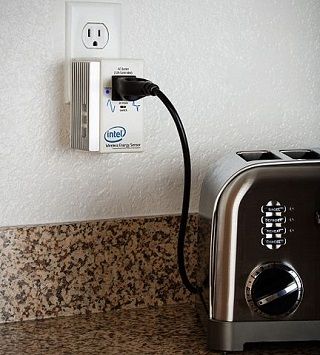From Guest Blogger Lizzie Weakly: Five Ways to Make your Home "Green" and Energy Efficient for this Fall

1. Changing the Thermostat
A programmable thermostat is one of the single best upgrades that a homeowner can make. According to the Department of Energy, a programmable thermostat set at the correct temperature could actually cut back on your energy bills by as much as 15 percent throughout the year. As for the winter months, it is best to set your thermostat at 68 degrees when the family is home. If you are comfortable sleeping with extra covers, then you can set the thermostat even lower during the night. Turning the thermostat down 10 degrees while the family is out of the house can save an additional 10 percent on your energy.
2. Winterize Windows and Doors
When it comes to energy inefficiency, cracks around doors, windows, and vents are some of the worst offenders. This is why many specialists suggest that homeowners winterize (weatherize) their doors and windows at least once a year. Winterizing your house is a simple task that requires nothing more than some weather stripping and a few hours of work. Those that are unsure of how to do this may want to call in a home auditor to do a full check of their home.
3. Schedule a Maintenance Call
The vast majority of your home’s energy consumption comes from the heating and cooling systems. While modern systems are relatively efficient, it is vital to have these systems serviced at least twice a year. Without professional maintenance, even a modern HVAC system’s efficiency can drop by as much as 15 percent a year. These service calls will allow a specialist to check for any damaged parts, lube moving parts, change filters, and top off fluids. As an added bonus, this will increase the lifespan of your HVAC system.
4. Upgrade Your Windows
Sealing and insulating older windows will cut down on energy bills, but those that want to enjoy real savings will need to upgrade their window treatments. The Department of Energy estimates that residents lose around $35 billion every year from inefficient windows. Modern windows and window treatments are designed to have multiple layers of insulation to keep heat in during the winter and block UV rays during the summer. Newer windows will also reduce the amount of sunlight that enters the room which will make flooring, paint, and furniture last longer. When combined with new shutters, the savings can be phenomenal.
5. Add Extra Insulation
Insulation is the first line of defense when it comes to the energy efficiency of your home. Unfortunately, many homeowners will go for a decade or longer without adding extra insulation or updating older rolls of insulation. All homeowners should check their insulation at least once or twice a year to ensure that it is sufficient. For those with older homes, it may be time to consider spray-in insulation that can cut costs even further. Older rolls of insulation are relatively effective, but they will allow some air to escape around the sides. Additional insulation is one of the most cost-effective methods of reducing a home’s energy consumption.
Just because it is time to start heating up your home does not mean that you need to dread your energy bills. These five simple tips will keep your family comfortable and your utility bills reasonable as the weather begins to cool off.
